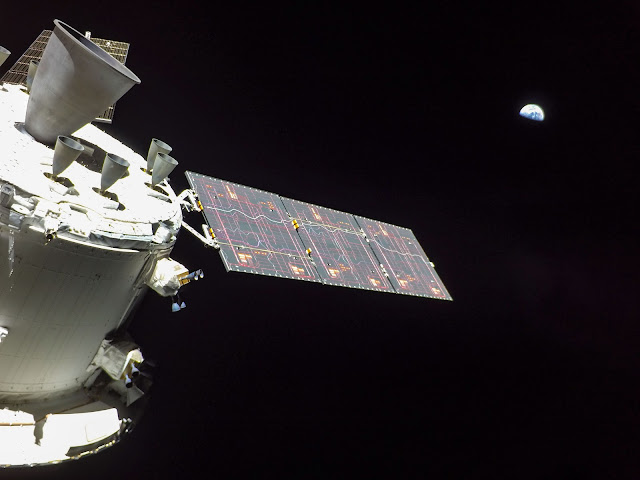Merging Galaxy Pair II ZW 96 | James Webb Space Telescope
A merging galaxy pair cavort in this image captured by the NASA/European Space Agency/Canadian Space Agency James Webb Space Telescope. This pair of galaxies, known to astronomers as II ZW 96, is roughly 500 million light-years from Earth and lies in the constellation Delphinus, close to the celestial equator. As well as the wild swirl of the merging galaxies, a menagerie of background galaxies are dotted throughout the image.
Image Description: A galaxy merger lies in the center of this image. The cores of the galaxies, colored blue, are below-center. They are surrounded by red star-forming regions which stretch up through and above the center. Faint yellow diffraction spikes appear in the middle. The lower galaxy is a mostly regular spiral shape, while the upper galaxy has been distorted heavily. The background is black, and covered with many tiny galaxies throughout the scene.
The two galaxies are in the process of merging and as a result have a chaotic, disturbed shape. The bright cores of the two galaxies are connected by bright tendrils of star-forming regions, and the spiral arms of the lower galaxy have been twisted out of shape by the gravitational perturbation of the galaxy merger. It is these star-forming regions that made II ZW 96 such a tempting target for Webb; the galaxy pair is particularly bright at infrared wavelengths thanks to the presence of the star formation.
This observation is from a collection of Webb measurements delving into the details of galactic evolution, in particular in nearby Luminous Infrared Galaxies such as II ZW 96. These galaxies, as the name suggests, are particularly bright at infrared wavelengths, with luminosities more than 100 billion times that of the Sun. An international team of astronomers proposed a study of complex galactic ecosystems—including the merging galaxies in II ZW 96—to put Webb through its paces soon after the telescope was commissioned. Their chosen targets have already been observed with ground-based telescopes and the NASA/ESA Hubble Space Telescope, which will provide astronomers with insights into Webb’s ability to unravel the details of complex galactic environments.
Webb captured this merging galaxy pair with a pair of its cutting-edge instruments; NIRCam—the Near-InfraRed Camera—and MIRI, the Mid-InfraRed Instrument. If you are interested in exploring the differences between Hubble and Webb’s observations of II ZW 96, you can do so here.
MIRI was contributed by ESA and NASA, with the instrument designed and built by a consortium of nationally funded European Institutes (The MIRI European Consortium) in partnership with JPL and the University of Arizona. The University of Arizona also provided the NIRCam instrument.
Credit: European Space Agency (ESA)/Webb, NASA & CSA, L. Armus, A. Evans
Release Date: Nov. 30, 2022
#NASA #ESA #Astronomy #Space #Science #Galaxy #Galaxies #IIZW96 #3Delphinus #Constellation #JamesWebb #SpaceTelescope #JWST #Cosmos #Universe #UnfoldTheUniverse #Europe #CSA #Canada #GSFC #STScI #UnitedStates #STEM #Education

















.jpg)